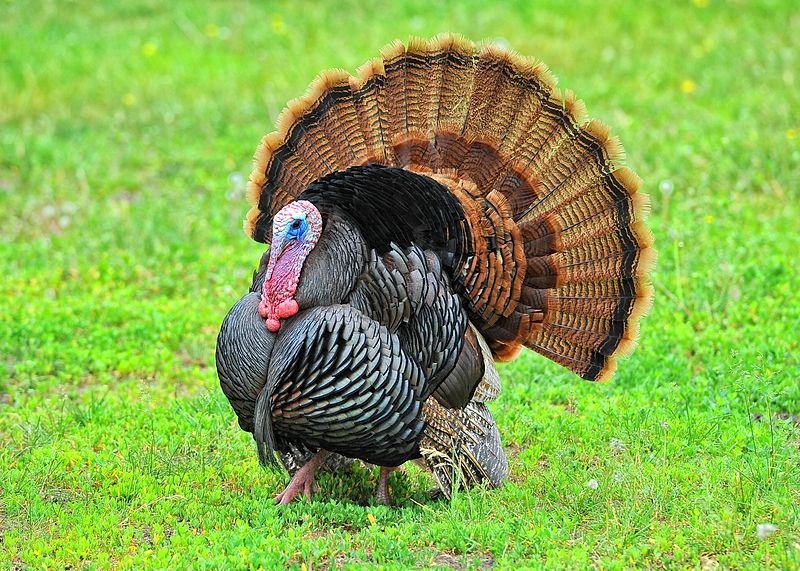The Nature Conservancy of Canada (NCC) is encouraging people to give thanks for the heroic recovery story embodied by the centrepiece of Thanksgiving dinner: the turkey.
Not so long ago, wild turkeys were a rare sight in Canada. Once abundant, it is estimated that only 30,000 of these birds remained in North America at the turn of the 20th century. Fast forward just over 100 years, and scientists now believe that there are more than 7 million wild turkeys trotting through forests across the continent.
Today, thanks to regulation changes and conservation efforts, people can spot wild turkeys in seven Canadian provinces, from New Brunswick, straight through to the BC Interior.
In honour of Thanksgiving, here are 10 facts to gobble up about wild turkeys, a species that has been documented on NCC properties across the country.
1. Male wild turkeys are called “toms,” while females are called “hens.” (Toms can be very reproductive – they can impregnate up to 15 hens)
2. At the start of spring, male wild turkeys gather in clearings to perform courtship displays. They puff up their feathers, lower their wings, fan out their tails and slowly strut, while making their famous gobble sounds.
3. Believe it or not, wild turkeys can fly; at night, they fly up into trees to roost.
4. Wild turkeys were extirpated (locally extinct) from Ontario as a result of habitat loss and over-hunting. Reintroduction efforts began in 1984, and turkeys are now a common sight in the province and are continuing to expand their range.
5. An adult turkey can have more than 6,000 feathers.
6. In 2019, the New Brunswick Bird Records Committee added wild turkeys to the province's official bird list, meaning the species was only then recognized as having an established population.
7. Wild turkeys mostly inhabit forests but often wander into open fields and grasslands to feed, nest and reproduce.
8. Wild turkeys are not fussy eaters. They feed on seeds, hazelnuts, oak nuts, hickory nuts, beech nuts, acorns, apples, fruit, snails, worms and amphibians year-round.
9. Wild turkeys can run at speeds of up to 19 kilometres per hour.
10. Certain characteristics of wild turkey droppings, such as their shape and size, reveal the turkey's gender and age. Female droppings are spiral shaped, while male droppings are J-shaped. The larger the diameter, the older the bird.
About
The Nature Conservancy of Canada (NCC) is the nation's leading private, not-for-profit land conservation organization, working to protect our most important natural areas and the species they sustain. Since 1962, NCC has helped protect 14 million hectares (35 million acres), coast to coast to coast. To learn more, visit natureconservancy.ca.



